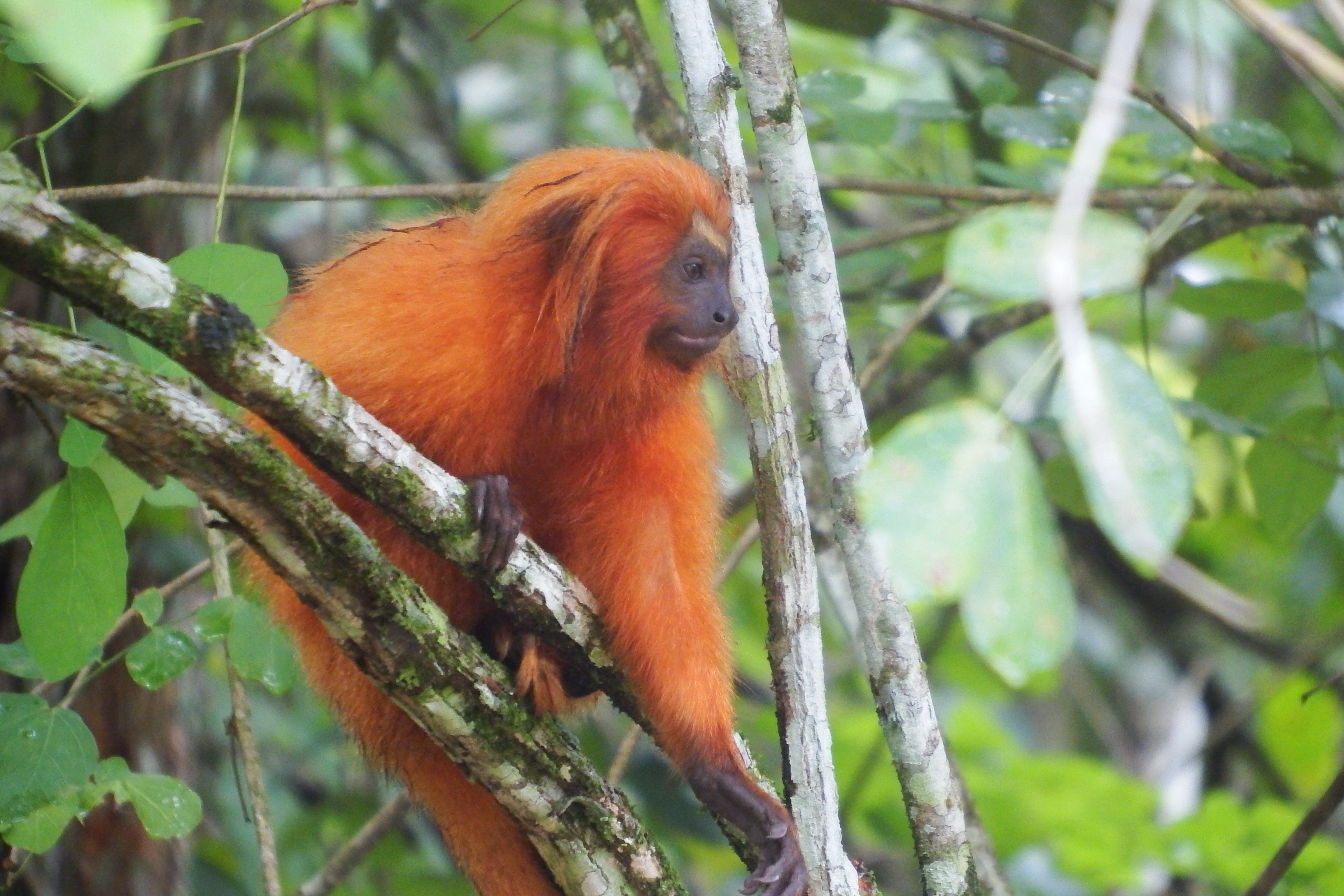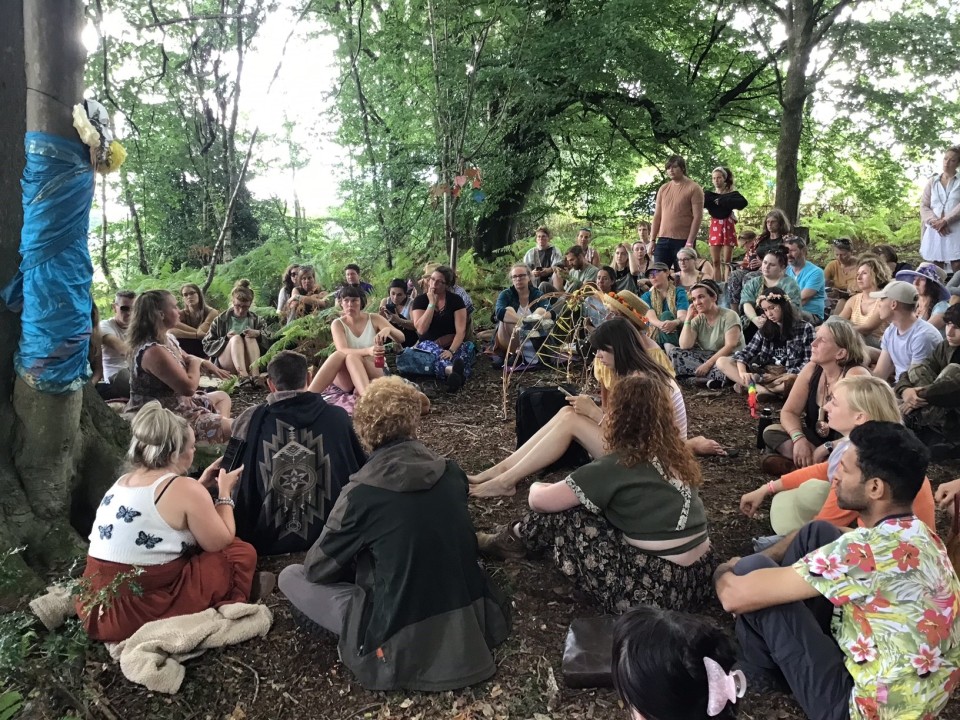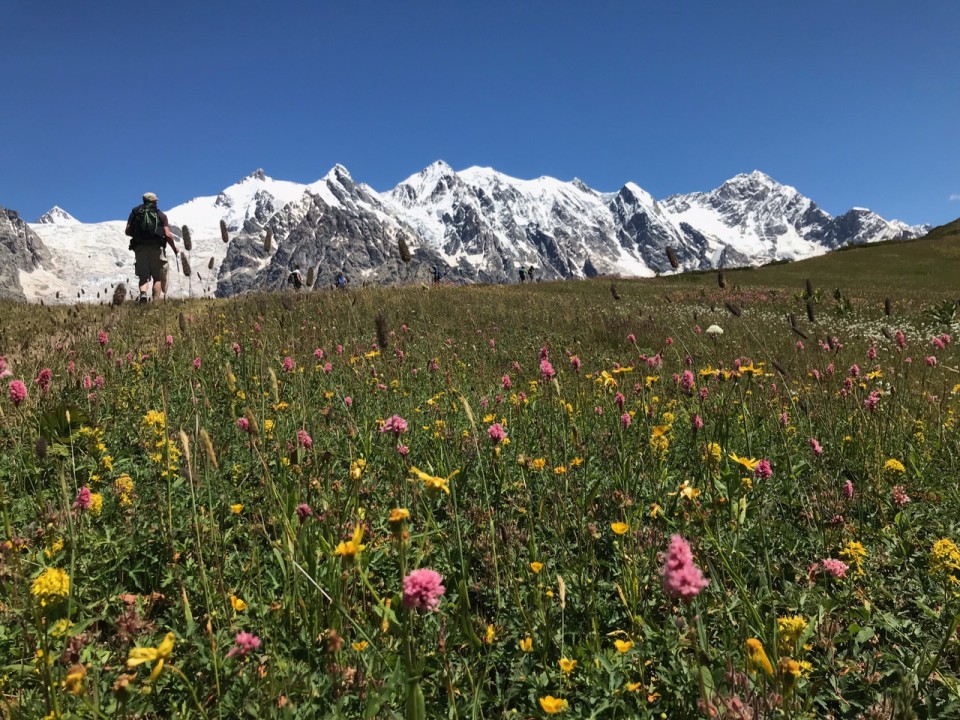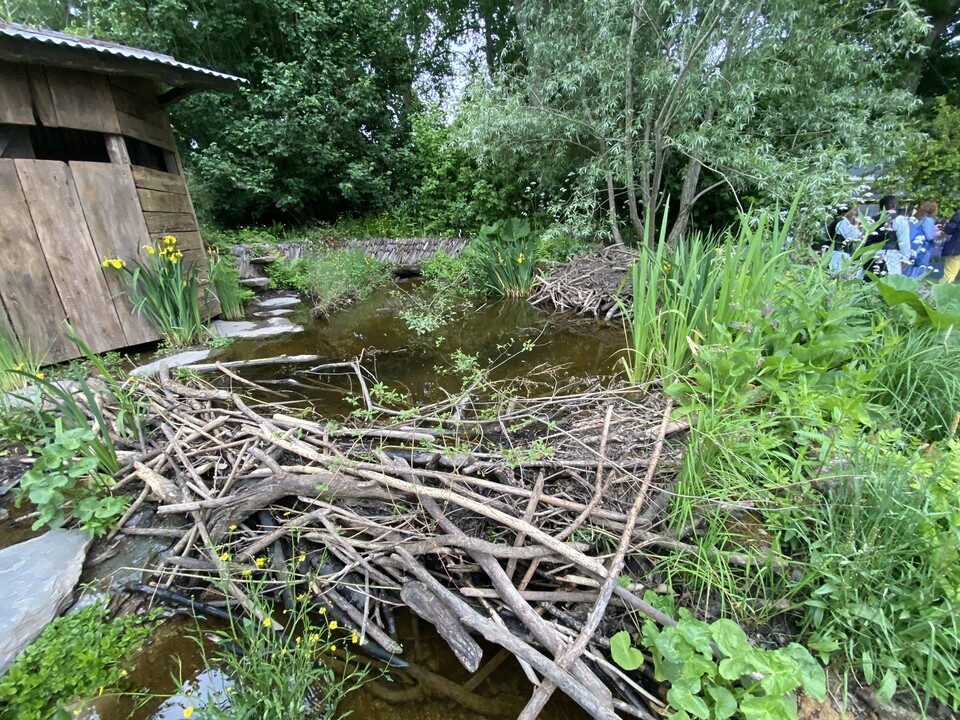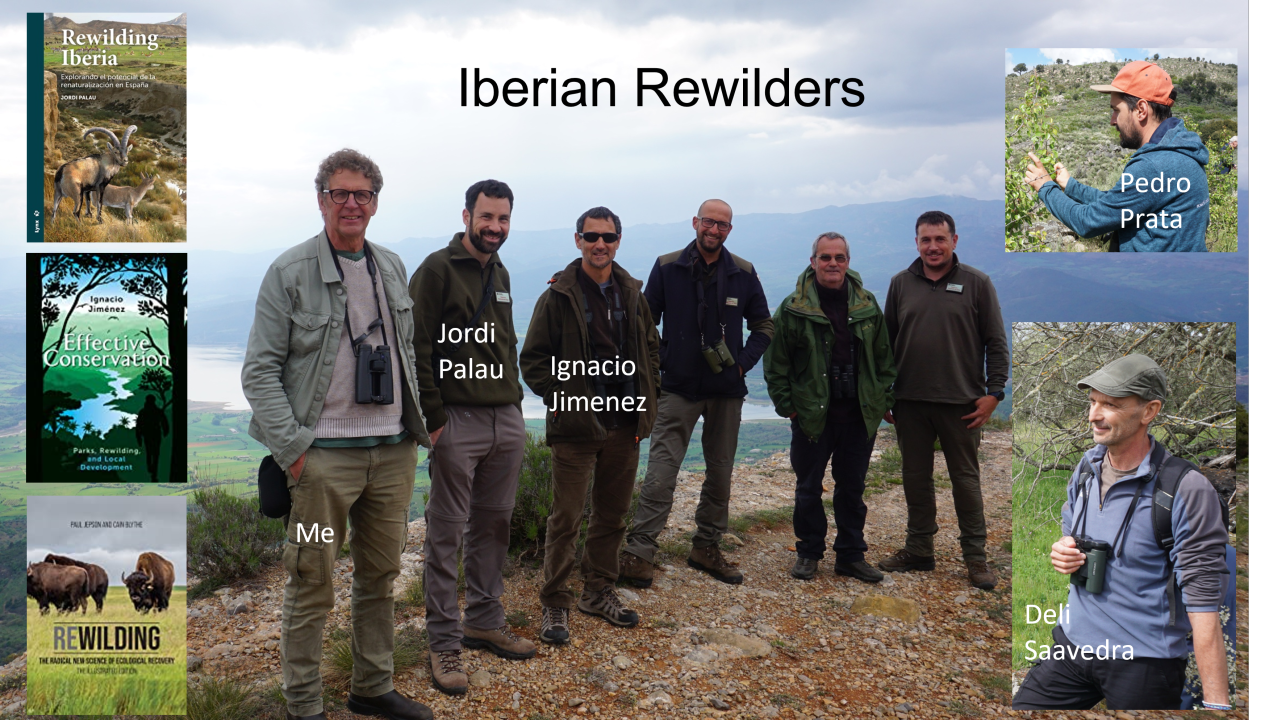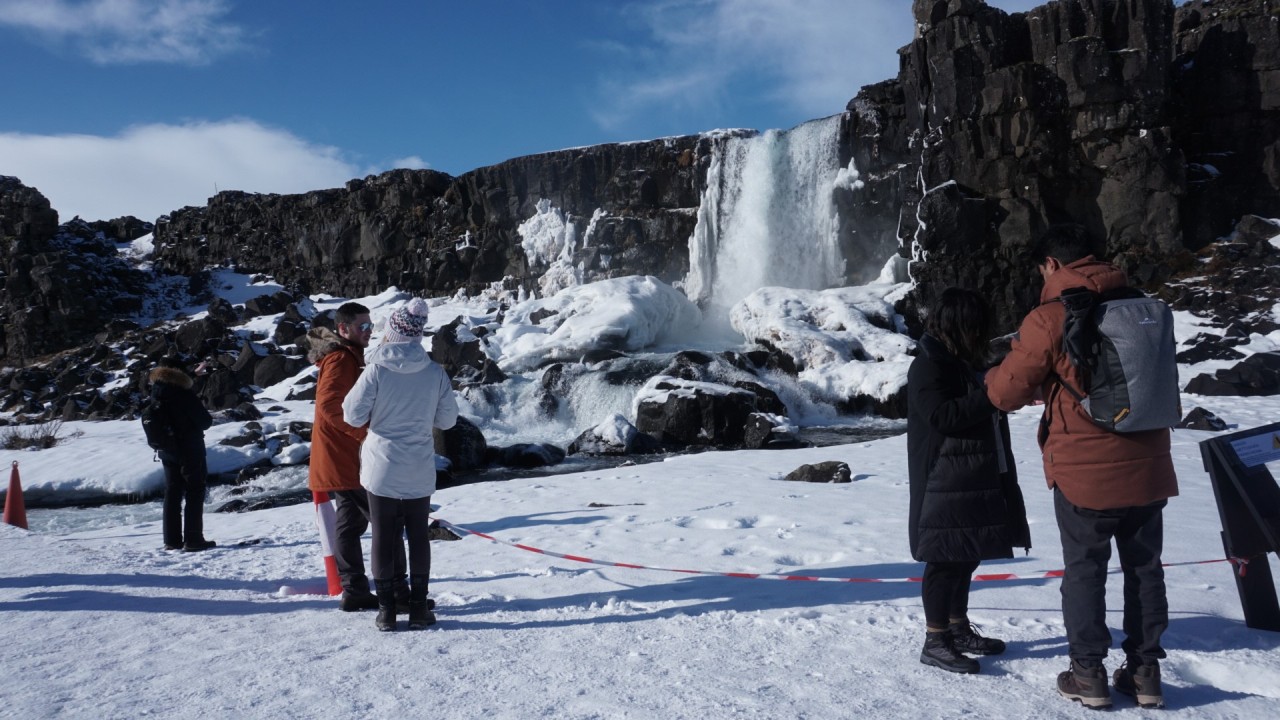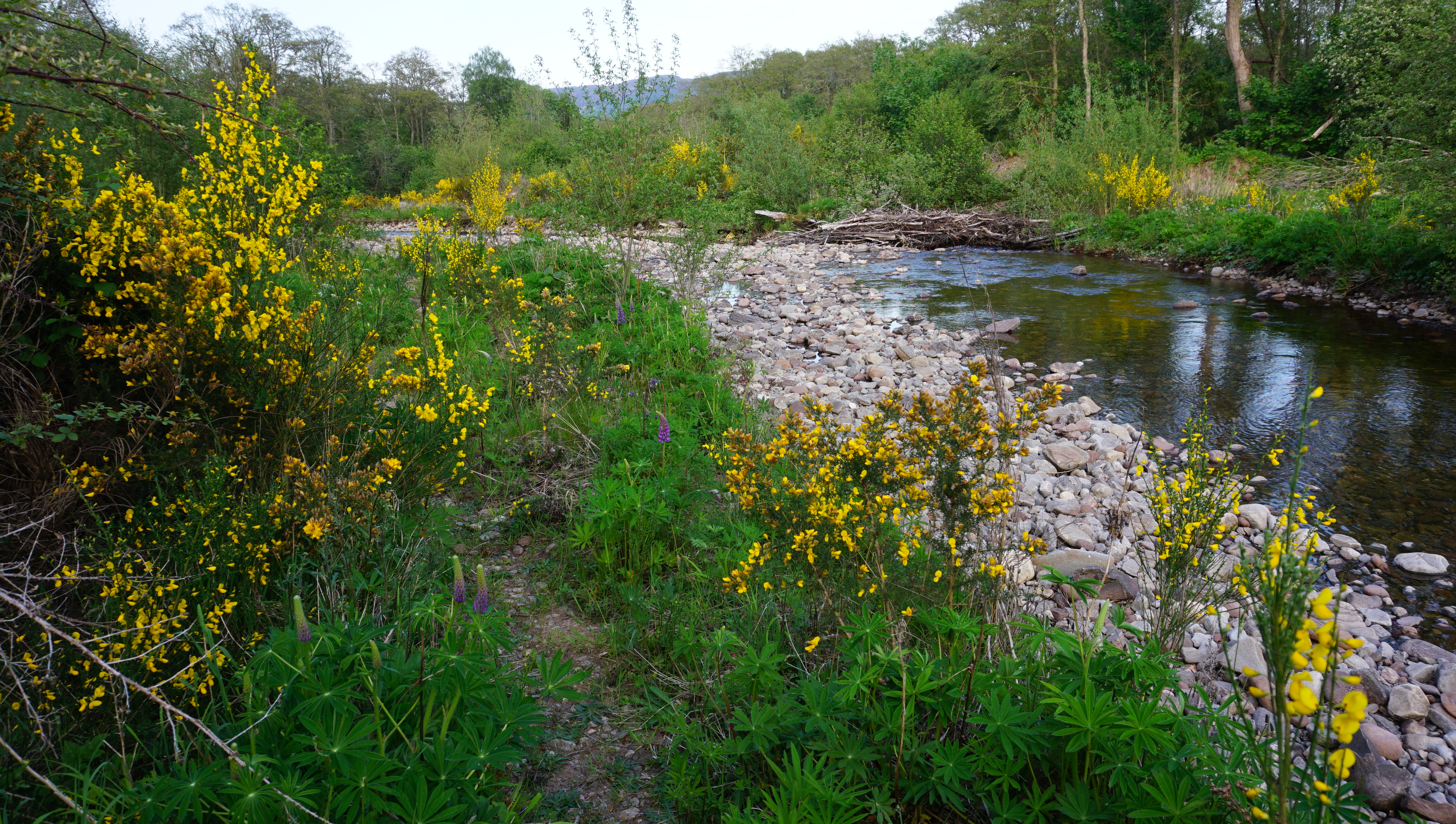By Paul Jepson, Richard J. Ladle and Susanne F. Schmitt.
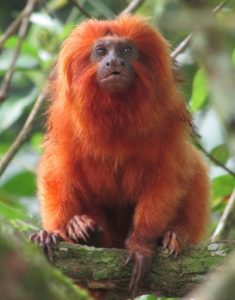
Photo; Richard J. Ladle
When we were started out in conservation in the 1980s the Golden Lion Tamarin (hereafter GLT) was the poster child for species conservation. The species is restricted to the Atlantic rainforests of southeast Brazil (Rio de Janeiro State) and in the 1950s Brazillian biologists realized that the species was rapidly disappearing. Forest loss was a major issue, but it was the unregulated pet trade that was driving the species to extinction. In those days Rio de Janerio had a vibrant animal market and this cute little monkey with its lion-like bright orange mane was just the thing to grace the stylish residences of the elite.
In the early 1960s, Adelmar Coimbra-Filho discovered a wild population of around 600 individuals, but by the time a proper census was completed in 1972 only 200 were left in the wild (plus 75 in zoos). It looked like the GLT would be the first primate to go extinct due to human actions.
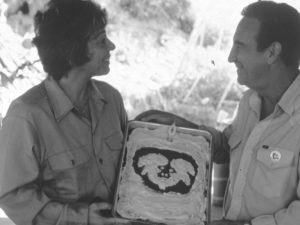
R.I.P. Gail Kleiman (1942-2010) and Adelmar Faria Coimbra-Filho (1924-2016) ‘Conservation heroes’
Fortunately it didn’t. Coimbra-Filho enrolled Devra Kleiman of the international zoo community and they mobilized a hugely successful recovery programme that simultaneously developed and blended in-situ and ex-situ conservation techniques. In 1974 the Brazilian government established the Poco das Antas Biological Reserve and over the next 30 years embarked on a sustained (and quite costly) programme of coordinated captive breeding, reintroduction / translocation and protection to rebuild the wild population.
In 2003 the GLT was down-listed from critically endangered to endangered on the IUCN Red list, and in 2013 the wild population was estimated to be 3316 individuals. This – the great monkey rescue – of the 20th century is an inspirational conservation success story. The question is what story will the next book in the series tell?
In April we visited the GLT conservation project together with our families and in conjunction with our research on the development of a protected area asset framework. It almost felt like a journey of homage – paying our respects to the dedication, tenacity, skill and achievements of the ‘conservation biology’ generation. Two guides from the Associação Mico-Leão-Dourado (AMLD) drove us to a roadside forest patch. One got out his radio transmitter to locate the group – slightly unnecessary, as a small troop were waiting for us a short 100m walk away. These individuals were ‘zoo-wild’ tamarins, a semi-habituated group of animals bred by Atlanta zoo and released into an isolated forest patch so they didn’t pollute the healthy ‘wild’ populations. They are, however, an excellent visitor asset for GLT conservation – a scientific permit is required to observe other populations.
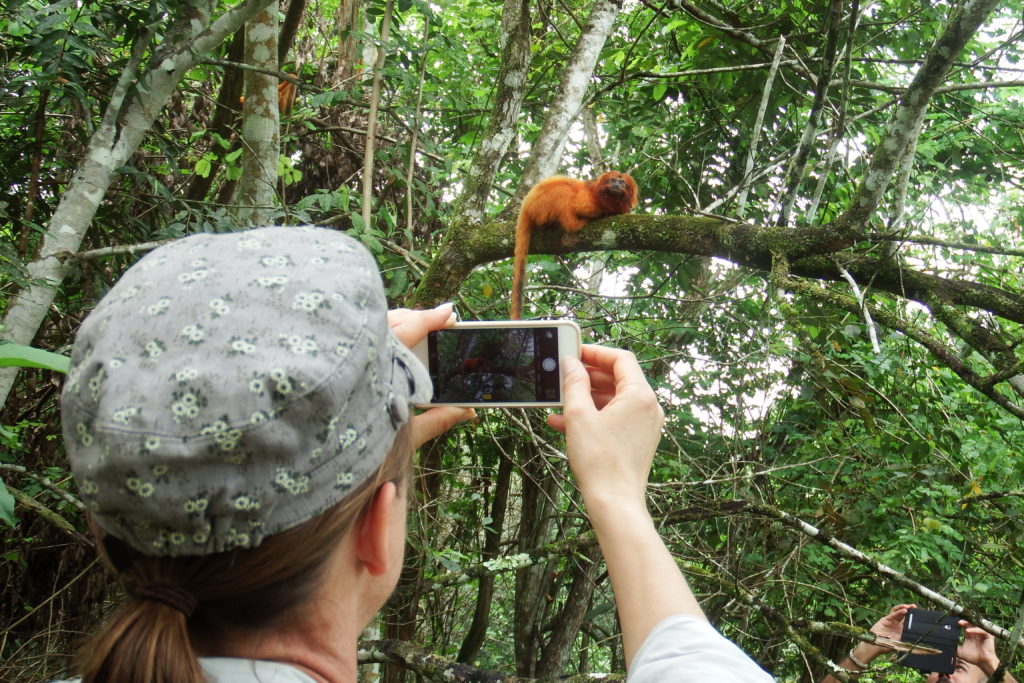
Photo: Paul Jepson
Talking with our guides it quickly became clear that the recovery phase of GLT had been completed. There is no longer any need for zoos to contribute animals for release, and the municipality of Silva Jardim has the largest concentration of private protected areas (RPPN) in the country, the majority of which were established with the encouragement of GLT conservationists.
After meeting the monkeys we drove over to see Luis Paulo Ferraz, the MD of AMLD, who told us how the next phase was all about landscape connectivity – overcoming the longer term risk that forest fragmentation poses to GLT and indeed all animal populations. However, restoring habitat corridors between forest fragments would involve either buying or leasing private land and it is a constant struggle just to raise funds for ongoing AMLD activities. As he put it ‘when I took on this job I never thought that 16 years later I’d still be selling T-shirts to raise funds’.
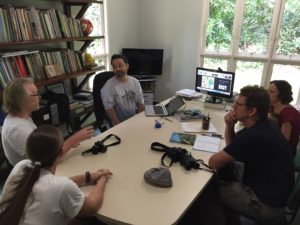
Photo: Susanne F. Schmitt
Luis’ predicament illustrates one of the great ironies in the conservation sector – success doesn’t necessarily translate into secure income. Once a species is ‘saved’ and the ‘conservation emergency’ fund-raising appeals have moved elsewhere, field programmes can struggle to attract the funds needed to secure and embed past gains.
As conservation moves on we need to develop new models and sources of conservation finance. This imperative underpins our protected area asset framework – the idea that we need to develop an investable form of conservation that blends conservation values with the concepts and practice of investment and finance.
We have regular conversations with investment bankers and asset managers based in the City of London. They tell us that there is plenty of capital that needs to be invested. Moreover, impact investing is a growth area and they would welcome the opportunity to invest in conservation products.
Impact investors expect that their capital to be secure, but will accept a lower financial return so long as their investment generates social and environmental impacts. Operationalising the notion of conservation impact investing faces a number of challenges. For instance,
1) How would the principal (amount borrowed/invested) be secured? Given that we can’t offer up protected areas as collateral what can conservation offer as security for the money invested?
2) How can conservation projects generate a financial return (even if small) from such investments? We are so used to running on grants and public funds.
3) How could we create a package of conservation activities into an investment product of sufficient size to interest investment institutions (probably $250 million upwards).
Part of the purpose of our trip to Rio State was to think about these challenges and to test whether our asset framework could inspire us to think differently about conservation solutions.
Our visit to Silva Jardim district and the GLT landscapes was fleeting, but two things really stood out:
1) the up-grading of 101 highway has transformed access to the region from Rio de Janerio – it is now a 2 hour drive away and a potential weekend destination
2) agriculture in the landscape appeared depressed. Colleagues at AMLD explained that outdoor recreation was already developing in the area – motor-cross, rafting and a high/zip-wire visitor attraction – moreover, stepping stone and corridor habitats for tamarins and other wildlife didn’t need to be particularly high quality.
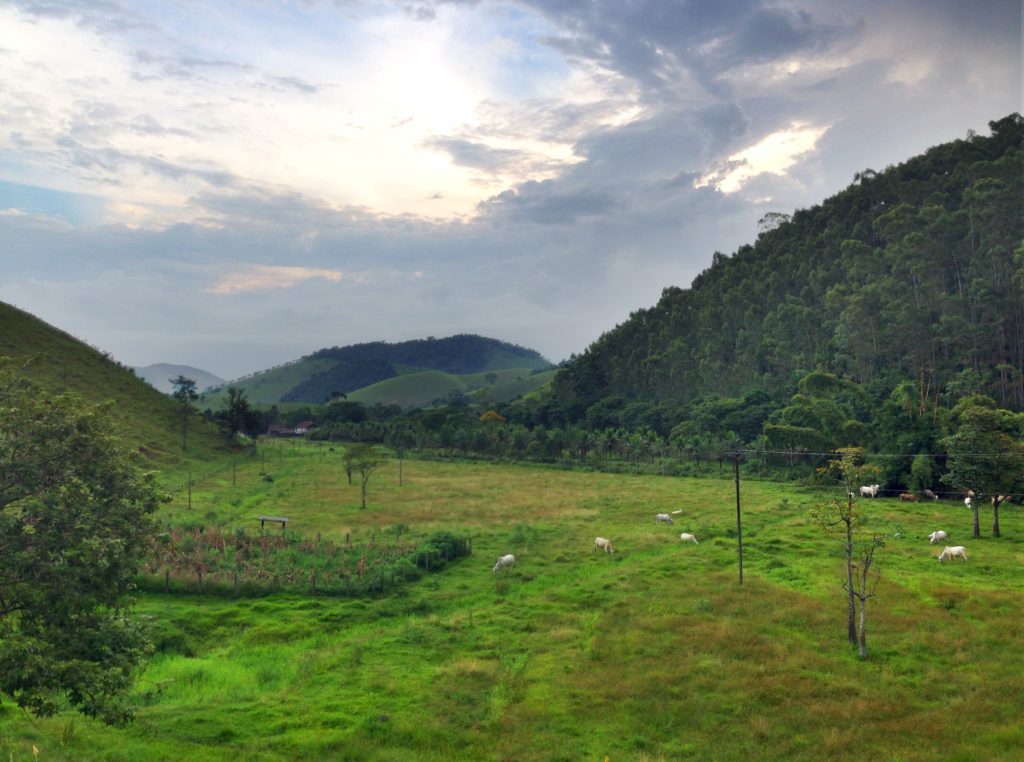
Photo: Paul Jepson
This gave us the idea for a ‘camping forest’ conservation impact investment product. Strategically located ranches (from an ecological, recreational and visitor perspective) would be purchased and investments made in ecological restoration and visitor facilities. These land assets would act as collateral on the loan and the rent (or sale) of camping pitches & batches and associated recreational enterprises would generate revenue and a return on the loan. The conservation and ecological impacts would be clear and relatively easy to measure. Moreover, an impact investment offer such as this could be designed to deliver clear social returns. For example, through holidaying and recreational opportunities for poorer urban families and more / better jobs for people living in the landscape. Lastly, it could be pursued at a geographic and financial scale that would interest investors.
This idea may not pass more rigorous analysis, but it is illustrative of an asset approach to conservation. One that extends and builds on past success, but which adds an investable conservation vision.
Please tell us what you think!
This is one of a short series of blogs on investing in Rio States PA assets. Please check out the others and leave your comments.
Our research is funded by Brazil CNPq-PVE Grant#400325/2014-4

